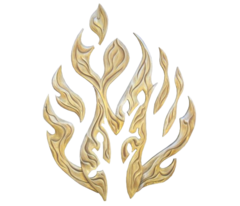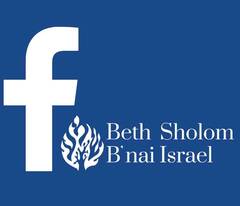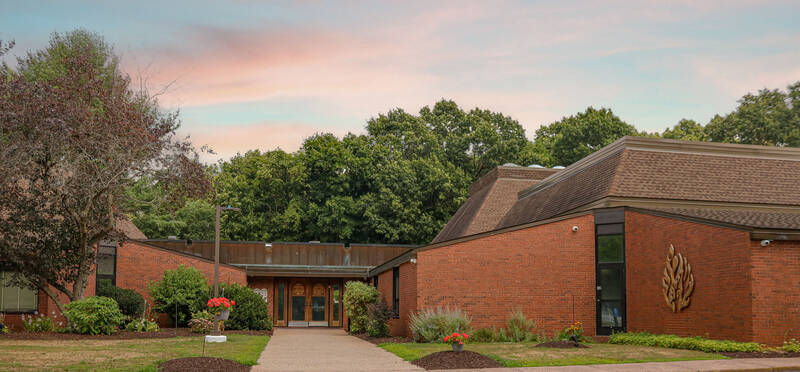Shavuot I 5782 June 5, 2022
Hag Sameach
We might think that the day when the Torah was given to the Jewish people would be one of the most important holidays on the Jewish calendar. Most rabbis will tell you that Shavuot is one of the most forgotten holidays on the calendar. It is one of the big three pilgrimage festivals but, unlike Pesach and Sukkot, Shavuot is a virtual afterthought.
In some ways this is like the Constitution of the United States. We do celebrate the signing of the Declaration of Independence on July fourth, but nobody remembers the date the Constitution was signed nor the day that the states finally ratified it. Both the Torah and the Constitution are the foundation of law for Judaism and for the United States, respectively, but the origins of both are mostly forgotten.
Judaism does stress that the Torah was given to our people on Mt. Sinai, amid great thunders and lightening, with smoke and fire. The people heard the voice of God, and that voice has resounded in Jewish circles ever since. But let me ask another interesting question: What happened to the Torah after it was received? Where did they put those two famous tablets of stone written by the finger of God? Did they place it on a pedestal in the middle of the Israelite camp? No. Did they place it in a location where people could see it and read it as they walked by? No. The two tablets of stone were put in a golden box, the Ark of the Covenant, and placed in the Holy of Holies, the one place where nobody ever entered except the High Priest on Yom Kippur.
If you were paying attention to the Torah reading yesterday, we realize that this golden box was the center of the Mishkan and the Mishkan was a mobile sanctuary that was transported from place to place as the Israelites would camp on their way to the Promised Land. This would mean that the tent would have to be disassembled, transported, and reassembled in the new location. What happened to the Ark when the tent was moved? How was it transported? We do know that there were poles that were attached to the Ark and an exclusive group of Levites, the sub-clan of Kehatites, would carry the Ark on their shoulders in the middle of the procession of Israelites as they marched.
But what we also learned yesterday, was that the priests, the son’s of Aaron, were assigned the task of placing the Ark and the other furnishings of the Mishkan into waterproof goat skin bags and only then could the Kehatites enter to pick up these holy items for transport on their shoulders. The Kohathites were forbidden to see the Ark and other furnishings covered. It was only after the sons of Aaron were finished “packing up” the items, that the Kehatites could enter and carry them away. If they saw the items before they were packed, they were liable to die. This was serious work.
Rabbi Aviva Richman, in her D’var Torah for Parshat Bamidbar writes, “The only way for the Mishkan to mean anything when it was dismantled so often was for those involved in logistics to constantly be aware of its power. There are two possibilities of what this danger might actually be. One concern is exposure of what is most holy and usually hidden, like other passages where we see that inappropriate access to the ark can lead to death. But Ibn Ezra sides with a different concern, that Kehat would see the sacred being covered. It is precisely in the moment that logistics involve “packing up” the sacred that a sense of holiness might vanish. What used to demarcate the space from which the divine voice emanated now becomes a nondescript piece of luggage; God’s voice is gone. The moment those who transported the ark thought of it as just moving furniture is when the Mishkan would be truly dismantled, robbed of its essence.”
Rabbi Richman goes on to compare this possible desacralization of the Ark to the Sefer Torah that we keep in our Ark here. When we open this Ark, we open it with song and with respect. We carefully remove the Torah scrolls and parade them around the room so everyone can show their respect for Torah, the central foundation of our faith. We say blessings before we read its words and after it is read; and sing and honor Torah even more as we put the scrolls away.
What we do not see is what happens on Wednesday. This room is empty, our own David Burstein opens the ark, removes the scroll and without any song, prayer, or blessing, opens them up and rolls them to the place they will need to be when we arrive on the weekend. He carefully marks each one so we know which ones we will use on which day. He places them back in the ark, closes the doors and puts out the lights in this room. There is no question that David acts with respect for the Torah scrolls, but it is just an item of wood, parchment and ink, and the deep spirituality and understanding it contains are just not noticed. The holiness of the scrolls is lost in the logistics of preparing it for Shabbat and holidays. It is the mundane needs of the logistics that the sons of Aaron are trying to preserve when they cover the Ark before the sons of Kehat, the Kehatites begin to transport it.
Rabbi Richman writes, “Yet, like any relationship rooted in profound and unfathomable love, awareness of the raw details need not diminish our sense of the Divine. Even those acts of “dismantling” contain a distinct power. Jewish life and community over the past many centuries reflects a constant state of attempting to carve out space for holiness across time and location, dismantling previous attempts and trying again. There is always the potential for this kind of instability to undermine a sense of the power of holiness, but it can also lead to a much more healthy and robust religious life. It becomes entirely out of the question to slip into familiarity and a fetishized vision of holiness, overly fixated on a particular form of expression.”
What Rabbi Richman is telling us is that if we have too much of a sense of holiness in any object, no matter if it is a golden Ark, two tablets of stone or a Torah scroll, there is always a danger that we will make an idol, a fetish, out of it. The item itself will become the source of holiness and not God. In our own time we get close to this fetishization of Torah when we make up stories of fasting when it should fall on the floor or make up rules about who can touch it in different circumstances. The holiness of the Torah does not come from the wood, parchment, or ink, it comes from the meaning that we find when we study it, from the intent of God when God gave it to us. It is not the center of our faith; it is the word of God, and it is God who is always at the center of Judaism.
We get a glimpse of this when we remove the Torah scrolls from the Ark. The Shaliach Tzibor holds the scroll in his or her hand and then turns to the Ark and bows to the empty place from which the Torah was removed. We bow to the presence of God in our sanctuary, not to the scrolls that contain God’s words.
Rabbi Arthur Green, writing for the Institute for Jewish Spirituality makes a similar observation. He writes, “There is a mysterious power to this detailed description of the need for the kohanim to cover each sacred object in its special case before Israel could set out on each of its many journeys. The Kehatite family among the Levites were charged with carrying these objects, but they could only approach them once they were hidden from view. To see them before they were covered, or even in the moment when they disappeared (literally: were swallowed up) into their goatskin bags, would have been a fatal desecration.
The fragility of this moment of hiding reveals the truth that even the most sacred of objects, those we most venerate and love, are in themselves merely things. Their holiness lives in the way we see them, the way we open our inner eye to them. It is that way of seeing, itself a precious gift, which needs to be protected.
In our own Jewish practice, the passage reminds me of the closed coffin at Jewish funerals. The living human face is a sacred object, containing within it something of divine light, the me, or panim of the face of Y-H-W-H. Many people report seeing that light shine with special brightness just before their loved ones pass. We should not let that vision be diminished by seeing the face as it is swallowed up by the earth, as we all one day will be.”
We close a casket not because we refuse to look upon the face of death, we close the casket so we can remember a life as it was lived. We respect the body that is left behind, but we honor the life that was such a vital part of our own life. Death is not about a life that is lost but it is about the love that remains with us always.
What is hidden is not forgotten nor does it enhance the spiritualness of any object. We ourselves assign the meaning to objects in the way that they remind us of God and the way that they help us draw closer to the divine. There did come a time when people could enter the Temple and special days when the curtain would be pulled aside so they could look at the Ark and understand its significance as the container that carried the words of God engraved on two tablets of stone. The mystery of the Ark may have been revealed but the love and respect for the God who made a covenant with us can always be found in the symbols of that pact; it was found in the Ark that carried the tablets; it could be found on the two tablets of stone that were engraved with God’s words. It still can be found in the Torah scrolls we carry today that contain the commandments of God, but the real respect for God comes from our own hearts when we remember this day as the day God loved us so much that God gave us the rules for living a meaningful and holy life.
As we recall the commandments given this day so long ago, we should remember that the holiness of so long ago is not what is important. What is critical is the holiness we bring to our lives every day. It is in this way that the voice of God at Sinai can still speak to us, and it is in this way we make God’s words, our Torah Eternal.
May God bless us with life, health, peace, and holiness as we say… Amen and Hag Sameach




